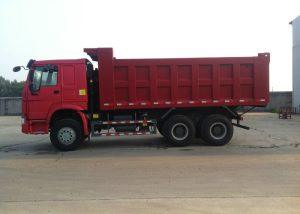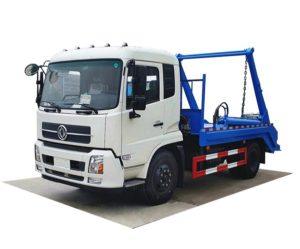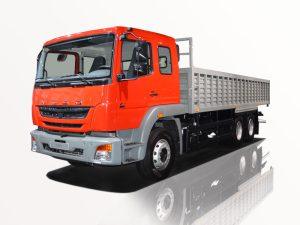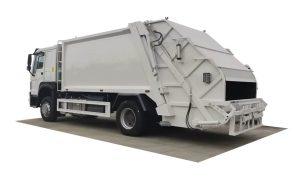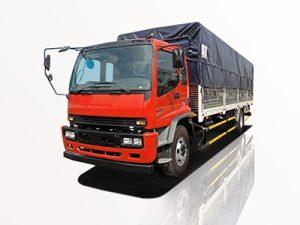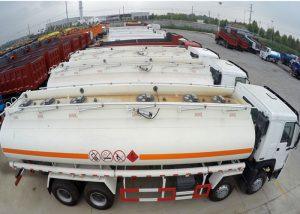Monday to Saturday - 8:00 -17:30
How Many Tons is a Dump Truck? Understanding Dump Truck Capacities
Dump trucks are essential vehicles in the construction and transportation industry, commonly used to haul heavy loads of materials such as sand, gravel, dirt, and demolition debris. One of the critical factors to consider when utilizing a dump truck is its load capacity, which can be measured in tons. In this article, we will explore various aspects of dump truck capacities, including the typical weight limits, types of dump trucks, and practical considerations to keep in mind when loading and transporting materials.
1. Overview of Dump Trucks
1.1 What is a Dump Truck?
A dump truck, also known as a dumper truck, is a vehicle designed to transport bulk materials. It features an open-top bed with hydraulic rams that allow the front of the bed to be raised, allowing the material to be “dumped” on the ground at the delivery site.
1.2 Types of Dump Trucks
Dump trucks come in various configurations, each suited for different types of hauling jobs. The most common types are:
- Standard Dump Trucks: These trucks have a full, metal bed with three sides that can easily expand for larger loads.
- Articulated Dump Trucks: These trucks have a hinge between the cab and the dump box, making them more maneuverable in rough terrain.
- Transfer Dump Trucks: These feature a separate trailer that can carry more load capacity.
- Side Dump Trucks: These allow for unloading on either side, perfect for narrow job sites.
2. How Many Tons Can a Dump Truck Carry?
2.1 Typical Load Capacities
The weight a dump truck can carry depends on its type and size:
| Type of Dump Truck | Typical Capacity (Tons) | Typical Capacity (Cubic Yards) |
|---|---|---|
| Standard Dump Truck | 10-14 tons | 12-16 cubic yards |
| Articulated Dump Truck | 25-30 tons | 15-20 cubic yards |
| Transfer Dump Truck | 20-26 tons | 14-18 cubic yards |
| Side Dump Truck | 10-14 tons | 12-16 cubic yards |
2.2 Factors Affecting Capacity
The capacity of a dump truck can be affected by several factors:
- Size of the Truck: Larger trucks can carry heavier loads.
- Type of Material: Different materials have varying densities. For example, gravel is heavier than sand.
- Legal Weight Limits: Local regulations may enforce maximum weight limits for vehicles on public roads.
3. Calculating Load Capacity
3.1 Understanding Weight Limits
Weight limits are often determined by the truck’s Gross Vehicle Weight Rating (GVWR), which includes the weight of the truck itself and its payload. It is essential to know the GVWR to avoid overloading.
3.2 How to Calculate Effective Load Weight
To find out how much weight you can load on your dump truck, you can follow this formula:
Effective Load Weight = GVWR – Tare Weight
Where:
- GVWR: The manufacturer’s maximum weight limit.
- Tare Weight: The weight of the truck without any payload.
4. Practical Tips for Loading a Dump Truck
4.1 Preparing for Loading
Before loading a dump truck, ensure that the truck is on a level surface. This practice helps prevent tipping during loading.
4.2 Distributing Weight Properly
Evenly distribute the load throughout the truck bed to maintain balance while driving. Overloading one side can create handling issues and increase the risk of accidents.
4.3 Knowing Your Materials
Understand the weight of the material you will be transporting. Use specifications provided by suppliers to determine how much of it you can load without exceeding the truck’s capacity.
5. Safety Considerations
5.1 Overloading Consequences
Overloading a dump truck can lead to equipment failure, increased stopping distance, and legal penalties. Ensure compliance with local regulations.
5.2 Proper Loading Techniques
Utilize best loading practices by securing the load and ensuring the dump bed is operated correctly to prevent accidents upon unloading.
6. Ways to Monitor Load Weight
6.1 Using Scale Systems
Invest in onboard scales that provide real-time weight monitoring to ensure you stay within limits while loading.
6.2 Visiting Weigh Stations
Using public weigh stations before departure can provide an accurate measurement of the truck’s weight when fully loaded.
7. Environmental Considerations
7.1 Reducing Environmental Impact
To minimize environmental impact, consider the following strategies:
- Aggregate Recycling: Use recycled materials when possible.
- Pollution Controls: Employ trucks with lower emissions to reduce air pollution.
8. Frequently Asked Questions (FAQ)
8.1 What is the average weight limit for commercial dump trucks?
The average weight limit for most commercial dump trucks ranges from 10 to 14 tons, depending on the size and type of truck.
8.2 Can you overload a dump truck and face no penalties?
No, overloading a dump truck can result in legal penalties, including fines and damage to the vehicle.
8.3 How do I know the weight of my materials?
You can obtain weight information from material suppliers or use a scale for precise measurements.
8.4 What factors contribute to dump truck capacity variations?
Variations in dump truck capacity can result from truck size, material type, and legal weight regulations in specific areas.
8.5 Are there different regulations for dump truck capacities by state?
Yes, regulations for dump truck capacities can differ by state, and it is crucial to research local laws before operation.
8.6 Why is it essential to know your dump truck’s capacity?
Understanding your dump truck’s capacity is essential for safety, legal compliance, and efficiency in operation, ensuring that loads are transported without risk of overloading.


